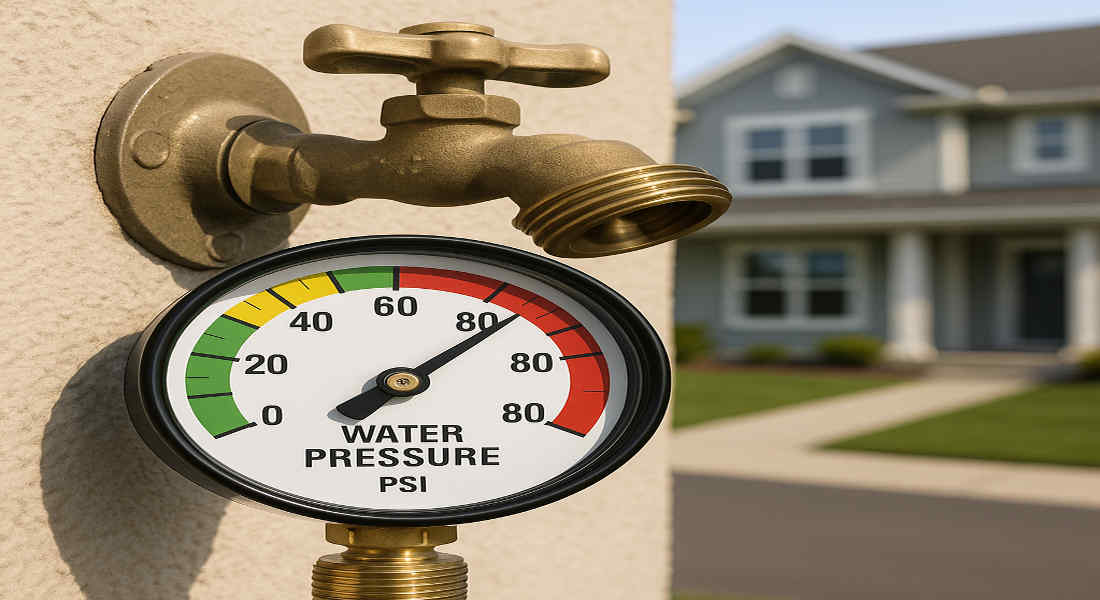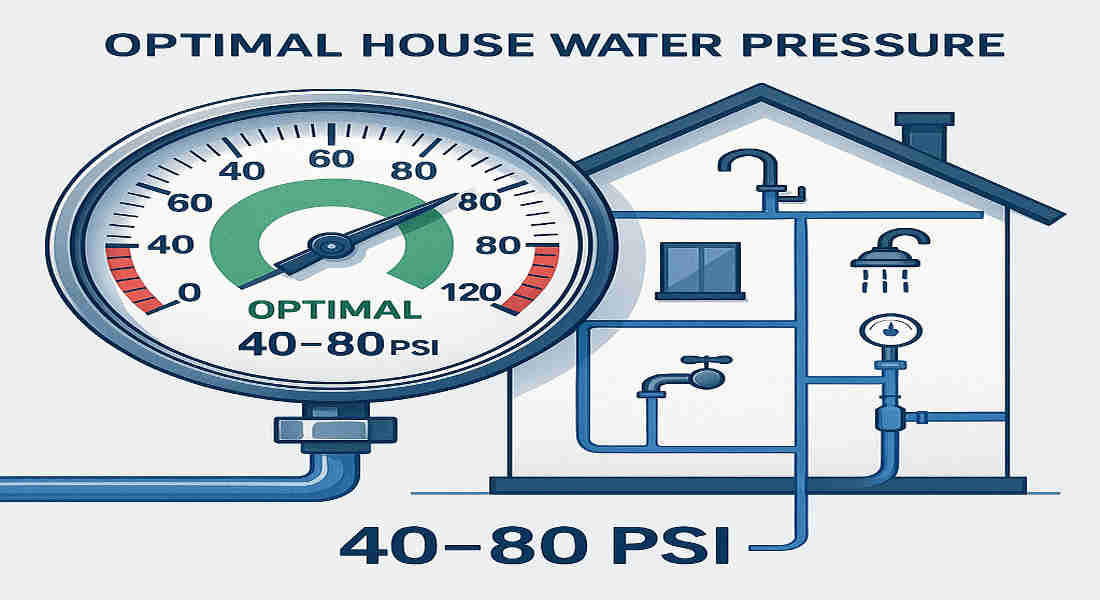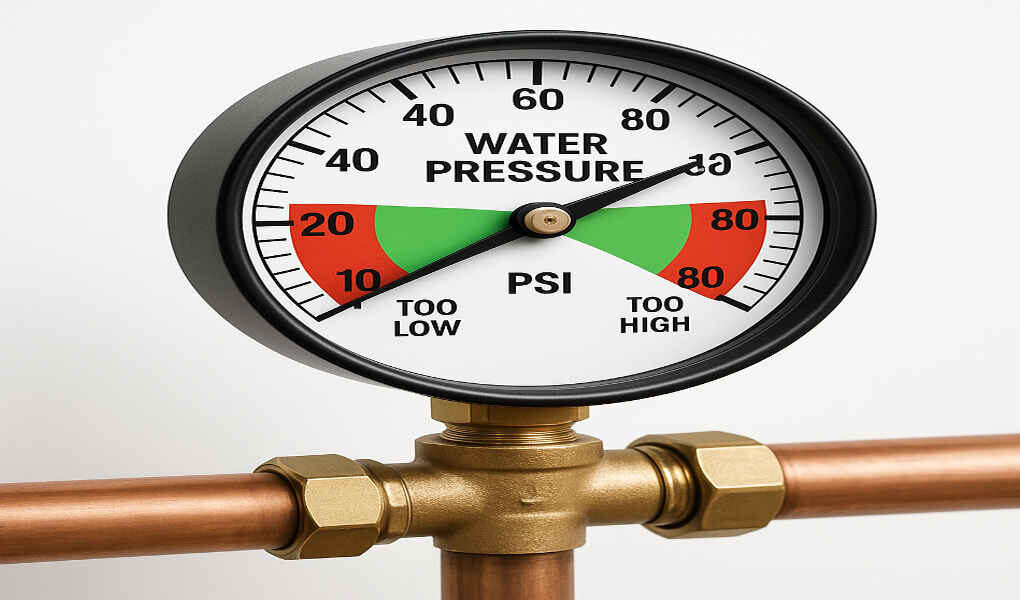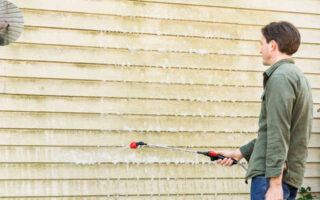Determining your home’s ideal water pressure is essential for maintaining efficient plumbing and ensuring comfortable water flow throughout your household. Water pressure, measured in pounds per square inch (psi), typically ranges between 40 and 80 psi in residential settings, with the optimal range being around 50 to 70 psi. Pressures below this range can result in weak water flow and performance issues with appliances, while pressures above them may cause damage to pipes and fixtures, leading to costly repairs. By accurately measuring your water pressure using tools like a pressure gauge or performing simple flow rate tests, you can identify whether your home’s water pressure falls within the ideal range and take appropriate steps to adjust it if necessary. This guide will walk you through the process of determining your home’s water pressure and understanding what constitutes the ideal level for maintaining the health and efficiency of your plumbing system.
What is Water Pressure, and Why Does it Matter?
Water pressure refers to the force that pushes water through your pipes and fixtures. It’s measured in pounds per square inch (psi) and varies depending on several factors, including your local supply system.
Why does it matter? Proper water pressure is crucial for efficient plumbing performance. If the pressure is too low, you may experience weak showers or sluggish faucets. This can turn everyday tasks into frustrating challenges.
Conversely, excessive water pressure can lead to serious issues, such as leaks, burst pipes, and damage to appliances. Maintaining a balanced level ensures that your home operates smoothly while also protecting the longevity of your plumbing system.
Understanding this balance helps not only with comfort but also with efficiency. When water flows properly throughout your home, it promotes more efficient resource usage and reduces waste—benefits we all want.
Understanding Your Home’s Water Pressure
Understanding your home’s water pressure is crucial for ensuring a comfortable living environment. Water pressure is the force that pushes water through your plumbing system, impacting everything from shower performance to washing machine efficiency.
Typically measured in pounds per square inch (psi), ideal household water pressure ranges from 40 to 60 psi. Too low, and you may experience weak showers or slow-filling appliances. Conversely, high water pressure can lead to leaks and potential damage over time.
Factors such as pipe diameter, elevation changes within your home, and municipal supply lines can all impact this vital measurement. Knowing how these elements interact will help you assess if adjustments are necessary for optimal flow throughout your space.
Regularly checking your water pressure can prevent headaches down the line and ensure a steady supply of hot or cold water when needed most. This knowledge empowers homeowners to make informed decisions regarding their plumbing systems.
You may also read (is home plumbing a dying trade or a growing opportunity).
Factors That Affect Water Pressure
Several factors can impact your home’s water pressure. One significant element is the elevation of your house. If you’re located on a hill, gravity may work against you, leading to lower pressure.
Pipe size and condition also play a significant role. Older homes often have narrower pipes that can’t handle modern demands efficiently. Corrosion or mineral buildup inside pipes can further restrict flow.
The distance from the main water supply affects the pressure that reaches your faucets and appliances. Longer distances typically mean more resistance.
Water usage habits in your area also matter. High demand during peak times can lead to pressure drops for everyone.
Municipal regulations on water delivery may influence the baseline pressure supplied to your home, affecting what you experience daily.
Tools for Measuring Water Pressure
Measuring water pressure at home is straightforward with the right tools. A pressure gauge is your best friend for this task. It’s a simple device that connects directly to an outdoor faucet or a washing machine hose bib.
Digital gauges provide precise readings and are easy to read, making them user-friendly for individuals unfamiliar with plumbing. Mechanical gauges are also effective, but they may require some interpretation of analog dials.
These apps can provide valuable insights into your system’s performance without requiring additional equipment.
Before measuring, ensure all faucets and appliances are turned off to get an accurate reading. This will help you determine if your house meets the ideal water pressure standard of 40-60 psi, ensuring comfort in daily tasks like showering or doing laundry.
You may also read (a guide to replacing plumbing in your home).
Steps to Determine Your Home’s Ideal Water Pressure
To find your home’s ideal water pressure, start by gathering the right tools. A simple water pressure gauge is essential. You can purchase one at a hardware store or online.
Next, locate an outdoor hose bib or faucet that you can easily attach the gauge to. Ensure all appliances and fixtures are turned off before testing to obtain an accurate reading.
Once connected, turn on the faucet fully and check the gauge. Ideally, your home’s water pressure should hover between 40 to 60 psi (pounds per square inch). If it falls outside this range, adjustments may be necessary.
If you’re not pleased with the results, consider checking for any restrictions in pipes or valves that might affect flow. You should also consult a professional plumber if issues persist after trying basic fixes.
Common Problems with Low or High Water Pressure
Low water pressure can be frustrating. You may notice weak showers or slow-filling sinks. This often indicates an underlying issue, such as leaks or clogged pipes.
On the other hand, high water pressure presents its own set of challenges. It can lead to damaged fixtures and increased wear on your plumbing system. Over time, this stress may result in costly repairs.
Both extremes can impact daily activities, such as washing dishes or doing laundry. Watering your garden can become a challenge if water pressure fluctuates too much.
You might also experience unusual noises when using faucets or toilets due to extreme pressure variations. Understanding these problems helps you take action early before they escalate into bigger issues that could significantly impact your home’s comfort and efficiency.
Tips for Improving Your Home’s Water Pressure
Improving your home’s water pressure can significantly enhance your daily life. Here are some practical tips to help you achieve that ideal flow.
Start by checking for leaks in your plumbing system. Even a small leak can lead to significant drops in water pressure over time. Use a simple leak detection test: turn off all faucets and check the meter. If it’s still moving, there’s likely a hidden leak somewhere.
Next, consider cleaning or replacing faucet aerators and showerheads. Mineral buildup can hinder water flow, so regularly unscrewing them and soaking them in vinegar will often do the trick.
If you’re experiencing low water pressure throughout the house, inspect your main water supply line. Older pipes may corrode or accumulate sediment over time. Replacing these pipes can dramatically improve overall performance
Sometimes, adjusting the pressure regulator is necessary if one is installed. This device regulates the incoming water from the street into your home; adjusting it could effectively raise your overall water pressure levels.
For those experiencing consistently low-pressure issues, installing a booster pump may be beneficial, especially in homes where high demand occurs during peak usage times.
Remember to consult with a professional plumber when needed! They possess expertise that enables tailored solutions tailored to specific circumstances within each household setup.
You may also read (mastering wall venting home plumbing solutions revealed).




